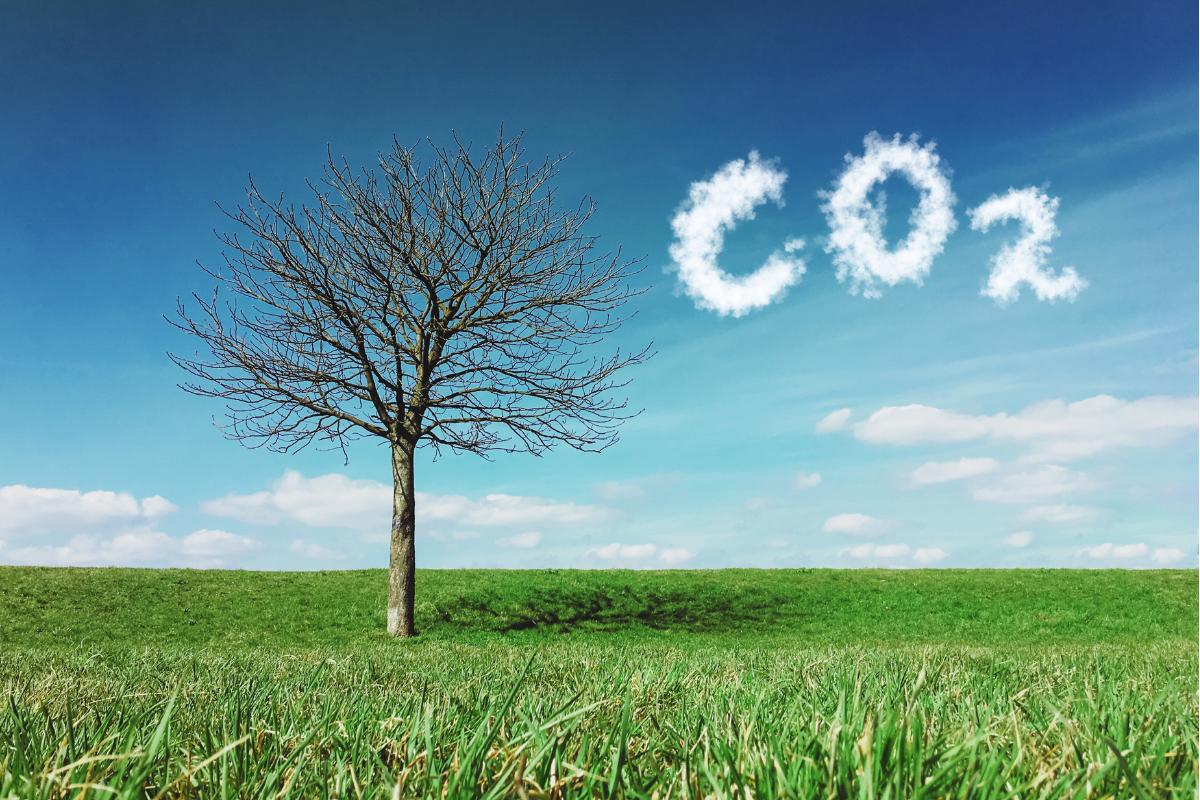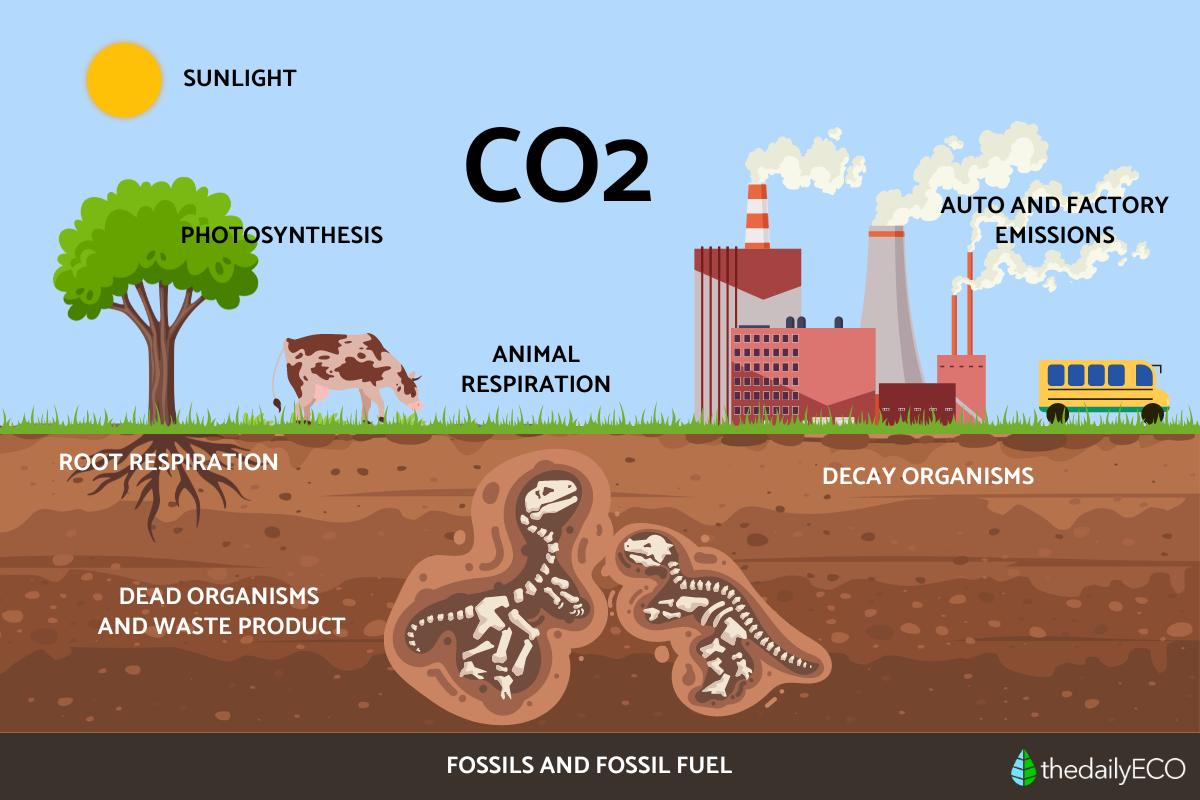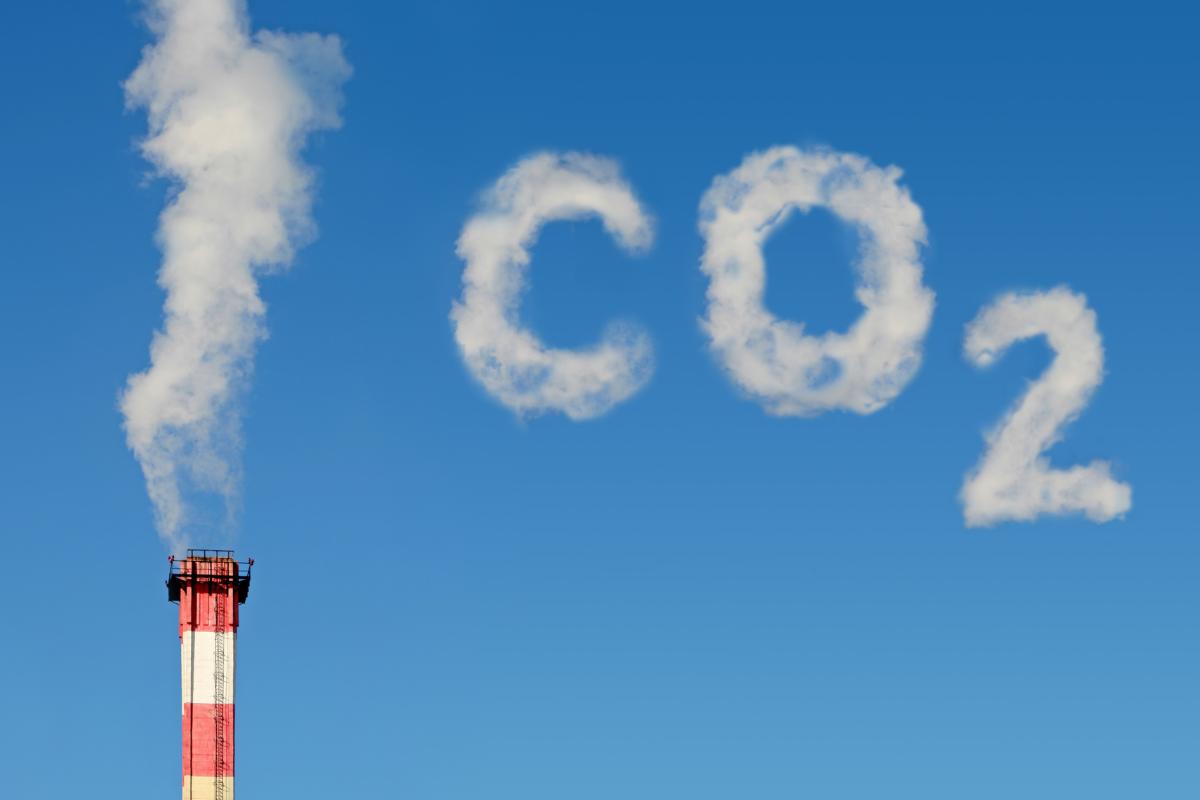Understanding the Carbon Cycle


The carbon cycle is a crucial natural process that regulates the amount of carbon dioxide (CO2) in the Earth's atmosphere. It involves the movement of carbon between the atmosphere, oceans, land, and living organisms. Understanding the carbon cycle is essential for comprehending climate change and the interconnectedness of our planet's ecosystems.
In this article by thedailyECO, we will delve into the details of the carbon cycle, exploring how it works, its significance in maintaining life on Earth, and the impact of human activities on its balance.
What is the carbon cycle?
The carbon cycle is a natural process that describes how carbon moves through different parts of our planet: the living world (biosphere), the ground (lithosphere), the air (atmosphere), and the water (hydrosphere). Carbon is a crucial element found in all living things and is essential for life on Earth.
The carbon cycle has two main parts:
- Biological carbon cycle: this part involves how living things, like plants and animals, handle carbon. Plants take in carbon from the air through a process called photosynthesis, where they use sunlight to turn carbon dioxide (CO2) into food. When animals and plants breathe or decompose, they release carbon back into the air through a process called respiration.
- Geological carbon cycle: this part focuses on how carbon moves through the Earth’s systems over much longer periods. For example, carbon can be stored in rocks and soil or exchanged between the atmosphere and oceans. This cycle also includes how carbon is stored in fossil fuels like coal and oil, which can release carbon into the atmosphere when burned.

What are the 3 steps of the carbon cycle?
As mentioned before, the carbon cycle is a complex process that involves the movement of carbon between the Earth's atmosphere, oceans, land, and living organisms. It consists of three main stages: production, synthesis, and fixation.
1. Carbon production
- Biosphere: living things release carbon dioxide (CO2) into the atmosphere through respiration, decomposition, and fermentation.
- Hydrosphere: oceans release CO2 as they warm, as warmer water holds less CO2.
- Lithosphere: volcanic eruptions release CO2 trapped in the Earth's crust.
2. Carbon synthesis
- Photosynthesis: plants, algae, and some bacteria absorb CO2 and convert it into organic matter using sunlight.
- Sedimentation: carbon is removed from the atmosphere when it forms limestone and dolomite in shallow waters from the accumulation of shells and other organic materials.
3. Carbon fixation
- Carbon sinks: carbon is captured and stored in carbon sinks like oceans, forests, permafrost, and limestone rocks.
- Oceanic absorption: oceans are the largest carbon sinks, absorbing CO2 from the atmosphere.
- Lithospheric storage: the Earth's crust stores significant amounts of carbon in limestone and fossil fuels, which are formed over millions of years. However, the rapid extraction and burning of fossil fuels contribute to climate change by releasing stored carbon back into the atmosphere.
For more information on the formation of fossil fuels, please refer to our related article.

What is the importance of the carbon cycle?
The carbon cycle is crucial for maintaining life on Earth. It regulates the amount of carbon dioxide in the atmosphere, which is a greenhouse gas that helps to keep our planet warm.
Here are some key reasons why the carbon cycle is important:
- The carbon cycle helps to maintain a stable climate on Earth. Carbon dioxide (CO2) is a greenhouse gas that helps trap heat in the Earth's atmosphere, making the planet warm enough to support life. However, the carbon cycle also helps regulate CO2 levels.
- Through the process of photosynthesis, plants convert CO2 and water into glucose and oxygen. This oxygen is released into the atmosphere and is critical for the survival of most life forms on Earth, including humans.
- Carbon is a fundamental building block of all living organisms. The carbon cycle ensures the continuous availability of carbon to form the molecules essential for life, such as proteins, fats, carbohydrates, and DNA.
- The carbon cycle is essential for the health and functioning of ecosystems.
- Carbon is a vital nutrient for plants, which are the basis of the food chain. Plants use CO2 for photosynthesis to create food, which serves as energy for other organisms (herbivores, carnivores, and decomposers). This cycling of carbon allows energy to pass through the food chain, supporting the growth and survival of living organisms.
- Carbon is also stored in soils as organic matter, which is vital for maintaining soil fertility. Decomposed plant and animal matter enrich the soil, improving its structure and ability to retain water and nutrients, which is crucial for plant growth.
- Oceans act as a major carbon sink, absorbing a significant portion of atmospheric CO2. This helps moderate global temperatures and maintain oceanic ecosystems.
- Many human activities, such as agriculture and industry, rely on the carbon cycle.
Dive deeper into the fascinating process of photosynthesis in our detailed article.

Human interventions in the carbon cycle
Human activities have significantly disrupted the natural balance of the carbon cycle, contributing to climate change. Here are some key ways humans have intervened:
- Burning coal, oil, and natural gas for energy and transportation releases vast amounts of carbon dioxide (CO2) into the atmosphere.
- Clearing forests for agriculture or development reduces their ability to absorb CO2, releasing stored carbon into the atmosphere.
- Certain industrial processes, like cement production, emit significant amounts of CO2 and other greenhouse gases.
- Livestock farming, manure management, and synthetic fertilizer use contribute to emissions of methane and nitrous oxide.
- Urbanization and other land-use changes alter the natural carbon balance, reducing the land's capacity to act as a carbon sink.
- Decomposing organic waste in landfills produces methane, a potent greenhouse gas.
- Increased atmospheric CO2 leads to ocean acidification, disrupting marine ecosystems.
Addressing these human-induced impacts is essential for mitigating climate change and preserving the health of the carbon cycle. While not without challenges, reforestation, afforestation, and carbon capture and storage (CCS) technologies aim to remove CO2 from the atmosphere and store it.
Don't miss our insightful article on how to protect and preserve nature's ecosystems.

If you want to read similar articles to Understanding the Carbon Cycle, we recommend you visit our Facts about nature category.
- M. Camps Arbestain, M. Pinto (2004) Carbon sinks in the framework of the Kyoto Protocol: http://edafologia.ugr.es/Revista/tomo11a/articulo27.pdf
- Biology. Campbell N. and Reece J. (2007). Editorial Panamericana.













